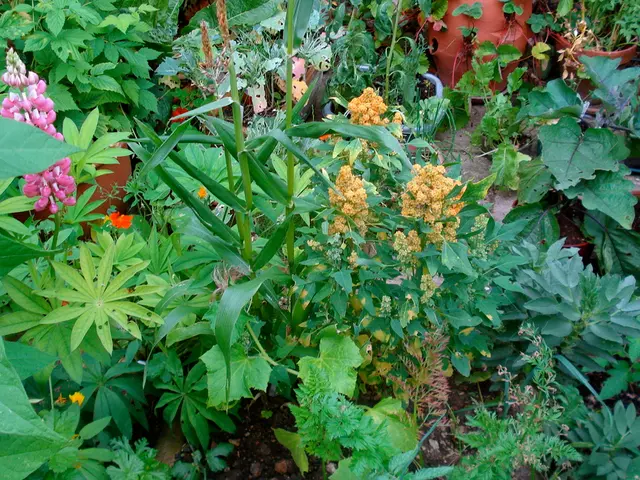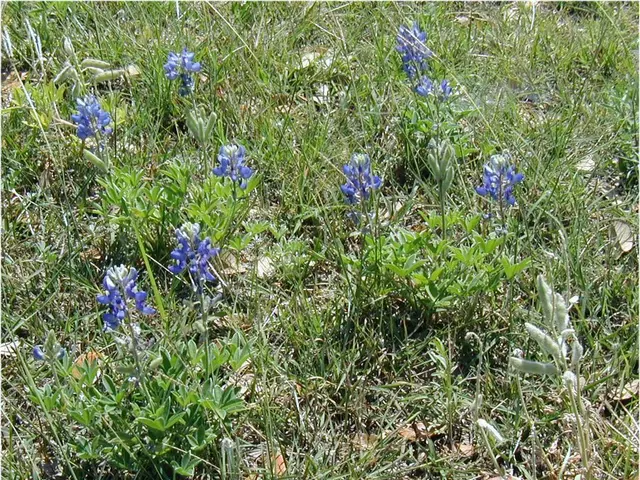After the tulips have blossomed, Consider These Options:
Vibrant Tulips All Year Round: A Gardener's Guide
Springtime wouldn't be the same without asplash of tulips adorning Holiday tables or makingfor beautiful Mother's Day presents. But these stunning flowers can lose their bloom over time. Worry not, as we tapped flower connoisseurs to share the secrets to lush and long-lasting tulip displays year after year. Read on for care tips that'll have your garden bursting with color.
- Andrew Bunting, Vice President of Horticulture at the Pennsylvania Horticultural Society
- Peggy Anne Montgomery, Horticulturist at Garden Media Group, representing Royal Anthos, the top Dutch bulb growers and exporters in the U.S. & Canada.
How to Nurture and Tend Perennial Tulips, the Ever-Dazzling Spring Bloomer
Fertilize upon Planting and Post-Bloom
While outdoor tulip beds don't necessarily require fertilizer, it can promote healthier growth, suggests Montgomery. Opt for an organic, low-nitrogen bulb fertilizer, such as Espoma Bulb-tone, during planting and again after bulbs bloom in spring. This helps revitalize tired bulbs. Follow recommended quantities, and remember, "more is not better"! It's crucial to use fertilizer suitable for bulbs, as they have distinct nutritional requirements. Many bulb vendors sell their brand.
Deadhead the Spent Blooms
Though most tulip types offer "diminishing returns" in the garden, according to Bunting, the way you deal with blooms once they fade can make a difference. Once tulips bloom in spring, gently pinch off the spent bloom head. Deadheading prevents the plant from allocating energy to seed production.
Preserve the Foliage
Though it's essential to deadhead the blooms, let the leaves wither naturally, which can take four to six weeks. Avoid braiding, tying, or cutting them prematurely. "Preserving the leaves helps recharge the bulbs for the following season," encourages Montgomery.
Store Bulbs for Autumn Planting
If you regard tulips as annuals, meaning you're harvesting the bulbs for fall replanting, follow these bulb-save techniques:
- Wait for the tulip foliage to die completely.
- Carefully dig them up, remembering they're around eight inches deep with roots.
- Shake off all soil and snip off any dead leaves and roots, being mindful not to cut into the bulbs.
- Set them out on newspaper and let them dry for several days or a week.
- Store them in a cardboard box or paper bag with good air circulation in a dark and dry location, such as a basement or cellar, until it's time for replanting in the fall. Regularly check for mold and remove any decaying bulbs.
Keep These Factors in Mind for Future Blooms
Care after blooming is vital, but other factors come into play to urge tulips to bloom again.
Choose the Right Type of Tulip
"Plant perennial varieties," advises Peggy Anne Montgomery. These types provide the best chance for re-bloom. Opt for bulbs specifically marked for "naturalizing" or "perennializing" for the best results. Montgomery recommends the following selections:
Species: Also known as botanical tulips, species tulips are the closest relatives of the first ones collected and ultimately hybridized into the large tulips we grow today. Plant these brightly colored tulips in large quantities for a stunning spring display. Best suitable for zones 3-7.
Darwin Hybrid: Marked by strong stems, these hybrids withstand windy spring weather. Their large flowers offer long-lasting color that can re-bloom for many years. Ideal for zones 3-8, but to promote naturalization, refrain from cutting the flowers.
Fosteriana: Also called Emperor tulips due to their massive flowers, this group is more common in Europe and is one of the better varieties for perennializing and naturalizing. Best for zones 3-8.
Greigii: With purple-mottled or striped foliage, these two-tone shaded tulips make an excellent addition to borders and rock gardens. Best for zones 3-8.
Kaufmannia: Also known as water lily tulips, these early bloomers have small bright blooms in various colors and contrasting centers. These compact growers are ideal for rock garden edges, window boxes, and pots-as long as they're shielded from freezing in colder areas. Best for zones 3-8.
9 Most Common Types of Tulips and Their Bloom Timing, According to Gardening Experts
Optimal Site Selection
For tulip bulb planting in the fall (October through November, 6 weeks prior to the first frost), choose a planting bed with moist, well-drained soil that receives full sun-about 6 hours per day-or gentle shade.
Avoid wet areas, cautions Montgomery, as the bulbs can rot in soggy conditions. Organic matter like cow manure, compost, or peat moss may enhance drainage.
Planting Location Selection
Select a spot with minimal competing plants, recommends Andrew Bunting. "Tulip bulbs thrive in a bed with little disturbance-not an established garden." A small area near the foundation or along the driveway, which receives some reflected heat, may encourage re-blooming.
Moderate Watering
Though it's advisable to water tulip beds immediately after planting to foster a good root system, they'll require minimal watering thereafter. "Natural spring rain is typically enough," offers Montgomery. In drier conditions, water thoroughly every two weeks.
[1] Web MD. Tulip, Hybrid bulbs - Planting & Growing Guide[2] Sweetpea & Saffron. How to improve and Care for Tulips in Pots[3] National Garden Bureau. How to Care for Tulips[4] Almanac. How to Plant Tulips in the Fall[5] Tulips in a Pot. When to Stop Watering Tulips
Enrichment Data:To maintain and promote the re-blooming of perennial tulip bulbs after flowering, consider the following tips:
- Deadhead: After blooms have faded, gently pinch off spent petals by deadheading the stem. This process stimulates the bulb to focus on energy storage, rather than seed production.
- Yellowing Foliage: Allow the leaves to wilt naturally, typically taking around four to six weeks. This time provides energy to the bulb for next year's blooms.
- Optimal Conditions: Ensure suitable drainage to prevent waterlogging and rotation of bulbs, a condition unfavorable for re-blooming.
- Fertilizer: Apply a balanced fertilizer like a 5-10-5 NPK formula at a rate of two to three pounds per 100 square feet, supporting healthy growth and future blooms.
- Reduced Watering: Limit watering a few weeks post-flowering, as tulip bulbs need moisture during growth but not during dormancy.
- Weed Control: Maintain a weed-free environment to prevent competition for nutrients.
By following these recommendations, you can help encourage your perennial tulips to re-bloom and sustain their vigor year after year.
- Switch to a 5-10-5 NPK fertilizer after the initial bulb fertilizer to promote healthy growth and future blooms.
- Adhere to moderate watering, allowing natural spring rain to suffice, with occasional deep watering in drier conditions.
- For long-lasting color shade, consider incorporating Martha Stewart's flower garden ideas, such as planting tulips en masse for a striking spring display.
- Incorporate perennials and annuals with complementary bloom times like alliums, poppies, and irises to enhance the garden's appearance and extend the flower season.
- Limit competition for nutrients by maintaining a weed-free environment and regularly checking for and removing any decaying bulbs to prevent disease spread.







